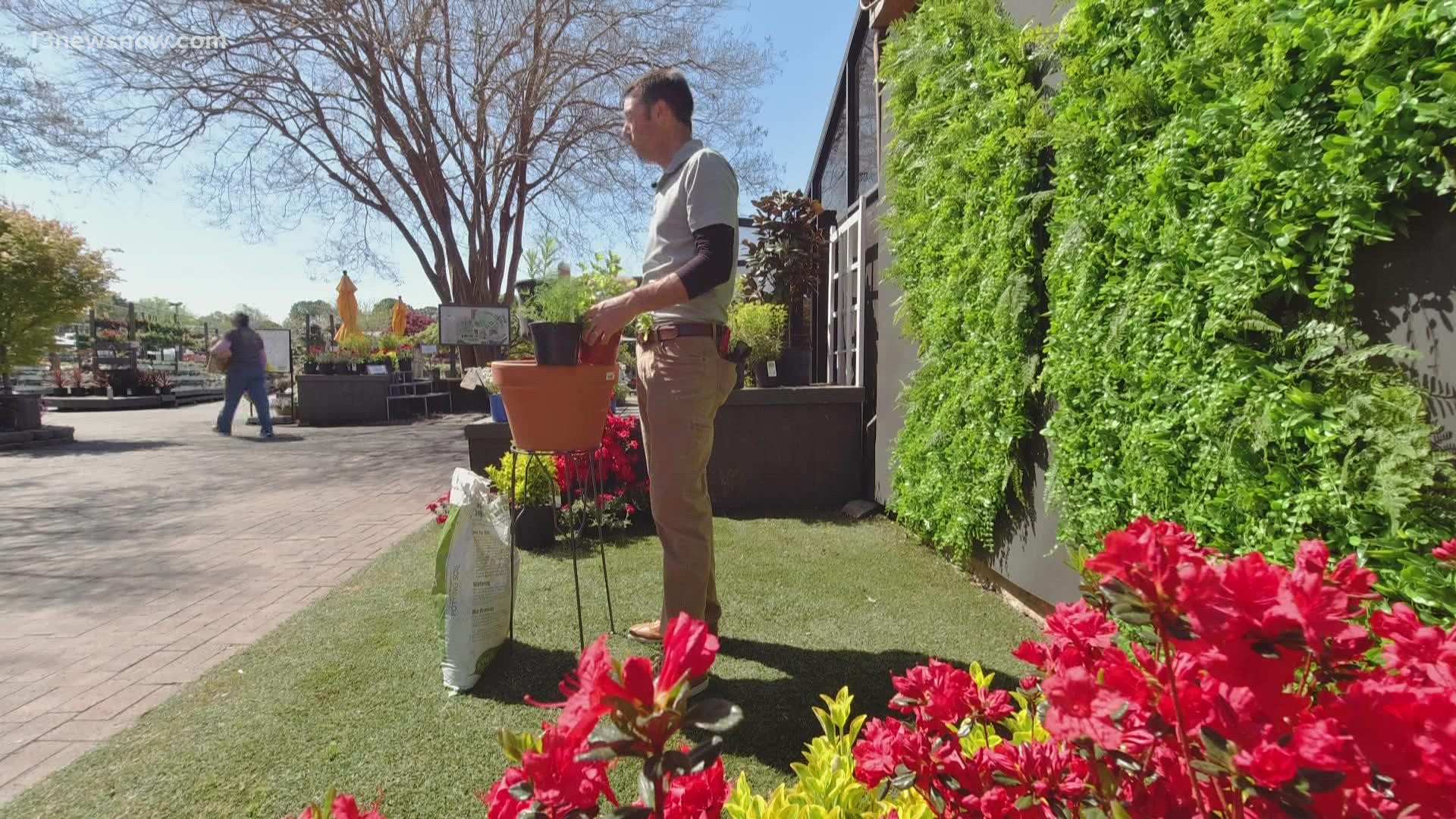VIRGINIA BEACH, Va. — It's been spring a few weeks now, but for local gardeners, April 15 is more important.
It's the average date of the last frost in Hampton Roads!
Mike Westphal, the "Garden Guru" of McDonald Garden Center, said that's like the green flag dropping for people who like to garden.
"The last frost is a good time to say, 'Okay, now I can get out in the yard and plant pretty much anything, I don't have to worry about anything,'" he said.
He said frost can damage tender plants, especially annuals, and it can be tricky to predict, because the weather doesn't have to get down to 32 degrees for a frost to happen. Any time the temperature drops below 40 degrees, there's no clouds and no wind, a frost could set.
There are actually two important "frost dates" for any area. The average date of the first frost, and the average date of the last frost. Westphal said that's easy to remember for this area, because they fall around other important days.
The first frost tends to happen on November 15, close to Election Day; and the last one happens on April 15, around Tax Day.
Gardeners who don't want to set out protective blankets any time there could be a frost tend to wait for April 15 to bring out their warm-weather plants.
If you want to know more about frost dates, Westphal explains them here:
So, it's time to garden! But what to plant?
Native plants make a great option for everyone from Master Gardeners to aspiring beginners. Choosing plants that evolved to grow in Hampton Roads means that when you plant them here, they'll be ideally equipped for the soil and climate.
One such plant is butterfly milkweed.
The plant's bright orange flowers, which start blooming in May, are a favorite for Monarch butterflies. Butterfly milkweed is also equipped to handle most soils for this area, ranging from clay-based mixes to sandy soil. It just wants to get lots of sunshine -- six to eight hours a day, preferably.
It's a great plant for families who like butterflies, because the butterfly milkweed starts out as an attractive "host plant" for Monarch eggs and caterpillars, and once the caterpillars transform into butterflies, they can stick around and use the blooms as a source of nectar.
Westphal said for an even more enticing pot, pair the milkweed with some dill and parsley (common, sun-loving herbs). Those plants attract swallowtail butterflies in the same way.
You'll need to water milkweed through droughts, especially if it's newly planted. The good news is, it doesn't really need plant food. It's suited to live here on its own.
If you want to learn more about native plants, Westphal explains them here:

